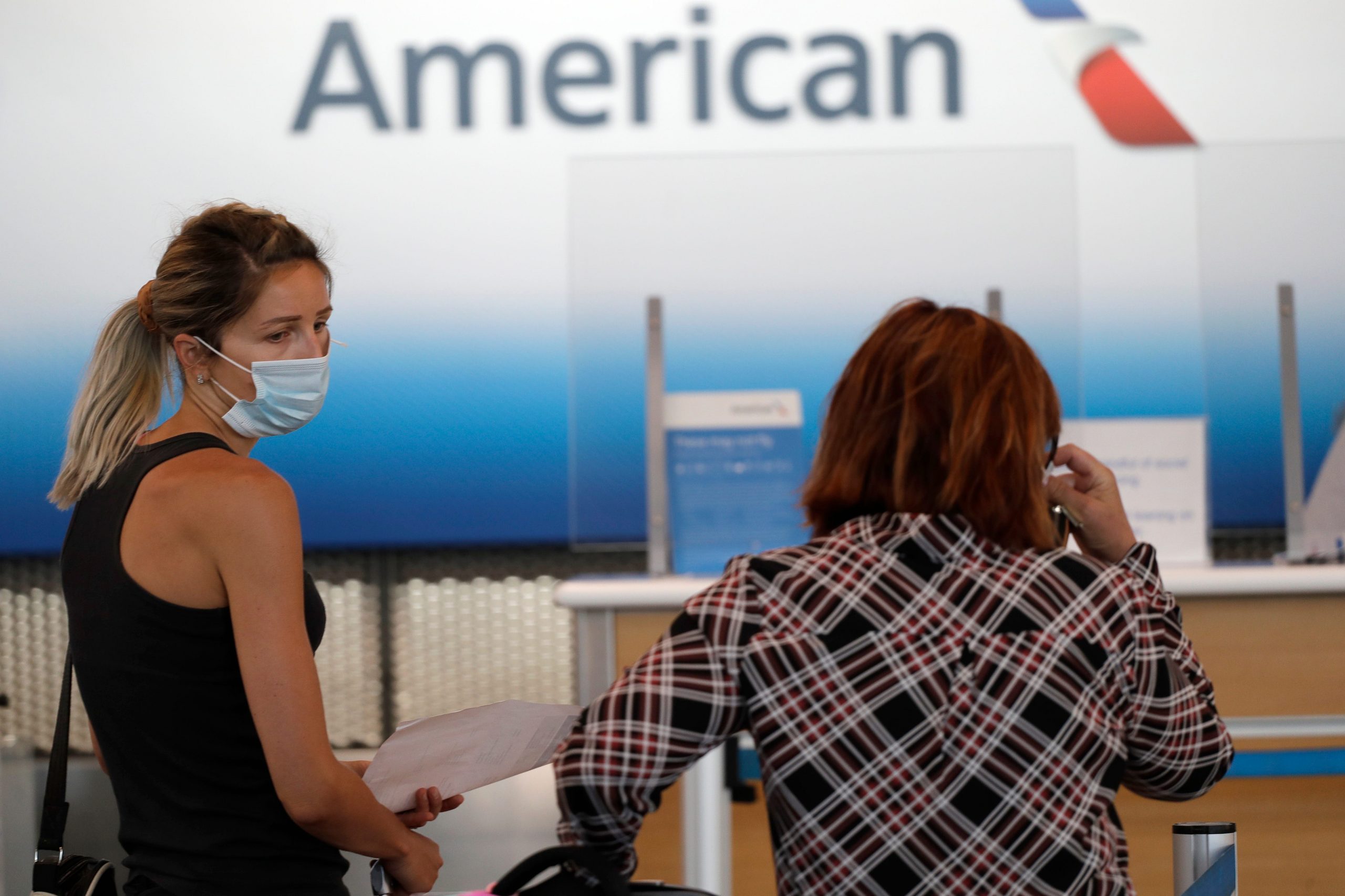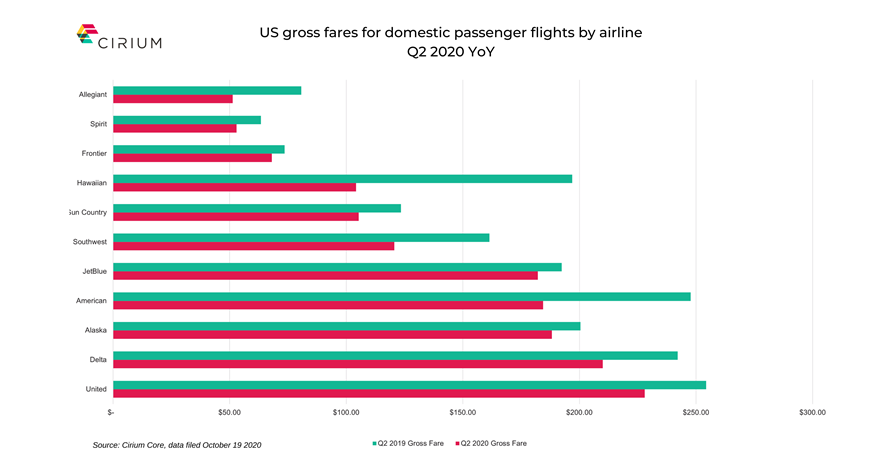
Associated Press
- As travel demand collapsed during the first few months of the pandemic, so did the price to fly.
- The average airfare for domestic flights fell 26%, according to data from the DOT and processed by Cirium.
- The data underscores airlines’ plight — the sliver of demand they’ve been able to get has less value than in the past, doubling the blow.
- Visit Business Insider’s homepage for more stories.
As the COVID-19 pandemic grounded many would-be flyers earlier this year, airlines didn’t just have plummeting demand to contend with. Compounding their financial pain was a staggering collapse in pricing power.
As shown by TSA data in the US, travel demand sank at the beginning of the second quarter before making some modest gains in late spring. As demand sank, so did prices.
Airfares for domestic flights in the second quarter dropped an average of 26% from the previous year, according to data from the Department of Transportation, released on a three-month delay and processed by airline analytics firm Cirium. That reduction came as travel demand fell as much as 97% over 2019 levels, before gradually improving to be down about 75%.

The drops were most pronounced at Hawaiian Airlines, where prices were down 47% as the island state effectively closed itself to outsiders, and at Allegiant, which lowered fares 36% as it moved aggressively to capture demand on specific routes where possible.
Fares were slashed at the majors as well. Average domestic fares at American Airlines were down 26%, while Delta cut fares 14%. United had one of the smallest reductions, down just 10% over 2019, while Southwest slashed fares by 25%.
Modern airfare is determined by a complex and highly secretive set of pricing algorithms, combined with input and adjustments from human managers in airlines' revenue-management departments. With travel demand falling as much as it did, price cuts were expected — a classic supply-and-demand dynamic — even as airlines grounded planes to cut capacity.
That compounded the challenges for airlines as they worked to implement new, costly cleaning measures onboard, while simultaneously reducing costs and seeking revenue wherever possible. The few tickets airlines did sell went for prices well below 2019 levels, another blow to airlines' revenues.
Notably, some markets were hit harder than others. The average price of flights into New York City fell 14%, while flights to and from Florida were down 29%.
Data for the entire second quarter is only just becoming available due to the DOT's three-month statistics delay, but data for the third quarter will be especially insightful when released. Ticket pricing is one of the few variables that airlines can fully control, and is an obvious lever to pull when trying to attract passengers.
As airlines tried unsuccessfully to drum up demand for leisure travel over the summer — hampered largely by COVID-19 case spikes and new travel restrictions in late June and early July — a comparison of pricing and actual demand will provide clues as to how much airlines can expect demand to actually recover before the pandemic is completely under control.
